Christine Hart's Blog
February 25, 2021
Worldbuilding for Retro Magic Realism: Part 2 — Windows to Other Places
 Photo by
Abhishek Tanwar
from
Pexels
Photo by
Abhishek Tanwar
from
Pexels
The explosion of digital publishing in the last decade has made me think long and hard about each and every story idea that pops into my little head. After all, when the book market (YA in particular) is so insanely saturated, what am I doing thinking about writing yet one more novel?
The reason to write The Electric Girl wasn’t necessarily rational. It was more of a compulsion than anything else. It’s partly that I needed to get this bizarre story out of my head so I could get on with my life; that’s true of every book or bauble to ever leave my hands. I had to write this book to indulge in the pure magic of living in my own imagined reality. I needed the worldbuilding.
CAUTION: Minor Spoilers Ahead!
Can You Build a Believable Alternate Reality?I love speculative fiction. If you catch me surfing Goodreads or Netflix for my next read or watch, I’m looking for sci-fi, fantasy, and generally all things weird. So, I’m a genre chick at my core. I like to think about how worlds, lives, even the nature of existence might be different out there, somewhere I’ll never see or even know for sure really exists. I write, not to flex my wordsmith muscles, but to imagine something magical and try to bring it to life.
Why? Pure Pop Culture FunI’ve always loved indulging in nostalgia. And I’m a sucker for pop culture. I find it fascinating that an object or image from the past can evoke strong emotions. And when it comes to pop culture, I love to puzzle over what makes something a popular and trendy thing. As a society, why do we love the things we do? For a start, what makes unicorns so compelling as a fantasy creature? More so than say, a chimera or a griffin?
In the first chapter of The Electric Girl, the imagined version of a unicorn that lives exclusively in my primary protagonist Polly’s head is so real to her that it’s real enough for a shape-shifting alien to telepathically copy. But the shift doesn’t hold and my secondary protagonist, Psyche, becomes a human girl.
The idea of a unicorn becoming a girl was inspired by on Peter S. Beagle’s The Last Unicorn. When I pictured Psyche opening portals across time and space, often crossing a dimensional barrier, I pictured the many doorways from Philip Pullman’s The Subtle Knife.
I know that in a larger sense, the after-school television I watched in the late 80s and early 90s — from Star Trek: The Next Generation and Twin Peaks, to The Twilight Zone and Amazing Stories influenced ideas like non-corporeal entities and seemingly impossible scenarios.
More recently, watching Stranger Things reminded me just how fun it is to have an adventure in the past — specifically, the gloriously campy world of 80s genre stories.
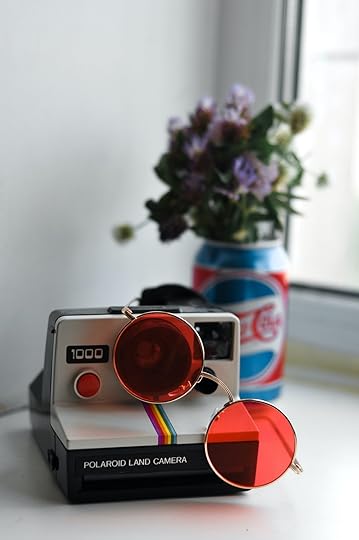 Photo by S L on UnsplashWhat? Exoplanets & Alternate Dimensions
Photo by S L on UnsplashWhat? Exoplanets & Alternate DimensionsEach moment in The Electric Girl that occurs outside our world is a far-flung terrain completely alien to us. When we first meet Psyche and her nemesis, they’re battling on an exoplanet in the middle of a dust storm. Instead of rocky outcroppings, they dodge gigantic quartz shards. And Psyche’s first alien form is a multi-winged serpent, something between a snake and a dragon.
The nature of the shape-shifting aliens who travel to these locations allows them to quickly adapt to the new environment by taking on a native life form. It might seem like a plot device, but the reason for this trait is much deeper. Being non-corporeal, but needing to take shape to travel and learn, is fundamental to the entire society of nearly extinct aliens I called morphlings. Their species was inspired by the general idea that so many celestial daydreamers latch onto, that there are aliens out there somewhere monitoring and preserving both knowledge and life. Such a thing seems both impossible and essential, therefore it’s extremely compelling to me.
How? Balancing Research & ImaginationThe task of bringing pop-culture influenced alien worlds to life calls for equal parts investigation and creativity. As a soft science fiction project, this book didn’t need a lot of exploration into the mechanics of how these planets functioned.
So, rather than getting into details like where they fit in their solar system’s habitable zones and how their rotation and orbit affected their seasons, I spent more time thinking about exotic terrain and odd-yet-relatable life forms. When we’re there for short scenes and brief flashes, I wanted those moments to feel as different from Earth as possible. Yet, they needed to be believable to not jolt the reader out of the story.
Although it came out after I wrote my book, I recommend Netflix’s Alien Worlds to anyone who wants a visual cue for their next worldbuilding project.
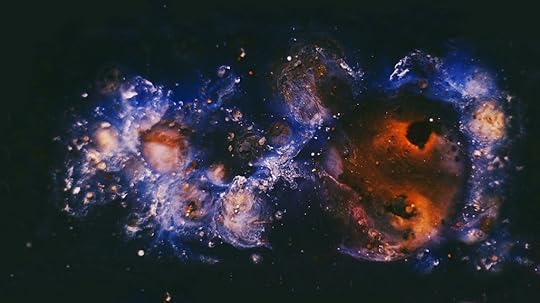 Photo by Miriam Espacio from PexelsWeird Worlds
Photo by Miriam Espacio from PexelsWeird WorldsWhether you define weirdness as something outside the norm here or something unknowable ‘out there’, either way, you’re treading on ground I’m going to find interesting. And I always employ the logic that, however weird I might be, if I like something, someone else will too. If I like an image or an idea, my fellow weirdos are out there. So, I hope The Electric Girl finds many like-minded readers in the coming months.

Worldbuilding for Retro Magic Realism: Part 2 — Windows to Other Places was originally published in The Fragile Receptacle on Medium, where people are continuing the conversation by highlighting and responding to this story.
November 30, 2020
Worldbuilding for Retro Magic Realism: Part 1 — The Real World
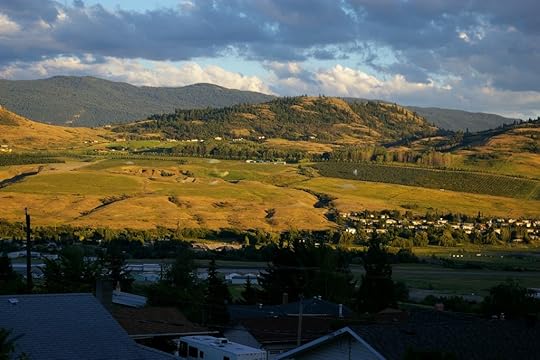 Okanagan Landing at Dusk
Okanagan Landing at DuskWhile kicking around setting ideas for my new magic realism book, The Electric Girl, I realized pretty quickly I would be jointly creating two spaces. Firstly, a version of the world as I knew it (and I decided to indulge once more in my home region, BC’s Okanagan) in the late 1980s. Secondly, I would need brief glimpses at alternate dimensions. But since this is Part 1, let’s start with The Real World.
Can You Ever Go Home Again?I sometimes wonder if the primary reason I write fiction is to find excuses to go home more often than I really can. And these days? Well, not many of us are going anywhere, so there’s an added layer of value to mentally retreating to home territory from time to time.
I’ve used the North Okanagan as the backdrop for Watching July and Best Laid Plans. I drew on settings from personal experience to both write what I knew and to offer Okanagan readers the novelty of seeing their own backyards in a fictional novel. When I was a little girl, any story I read set in British Columbia was usually in Vancouver, but even then, I felt more connected to the work. Like the feeling many of us get noticing Lower Mainland and Interior BC settings in contemporary film and television.
For The Electric Girl, I wanted to add one more element to the idea of going home. I wanted to go back in time as well. But don’t worry, there are zero spoilers below! It’s strictly shop talk.
When? The Summer of 1988I chose the late 1980s for a simple reason; it was an idyllic period in my life and I have fond memories of being an outdoor kid in that time. And now having children of my own, handing down toys and ephemera, sparked a realization that visiting my personal past, and that time in general, was a positive experience. I can only hope that I was able to recreate 1988 well enough for that emotion to translate into a good feeling for my readers too.
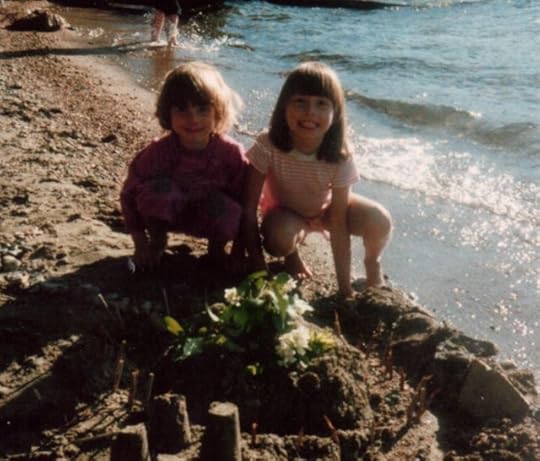 Kin Beach in 1987
Kin Beach in 1987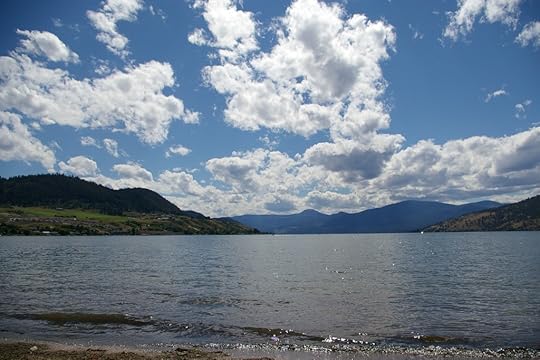 Terrace Mountain from Kin Beach in 2006Where? The Okanagan in BC
Terrace Mountain from Kin Beach in 2006Where? The Okanagan in BCIf you’ve visited the Okanagan, you know it’s beautiful, and to some extent, still unspoiled. Lakes give us beaches. Semi-arid hillsides give us orchards and vineyards. While the distance from major cities provides the experience of a slower pace — and this was much more pronounced in the 1980s and 90s.
The Okanagan has no overly dramatic landmarks beyond lovely vistas and perhaps the odd kitschy installation like Kelowna’s ogopogo statue or Penticton’s peach ice cream stand. Using a setting like this works well to create a relatable hometown atmosphere applicable to regions from central British Columbia all the way through the states of Washington, Oregon, and California.
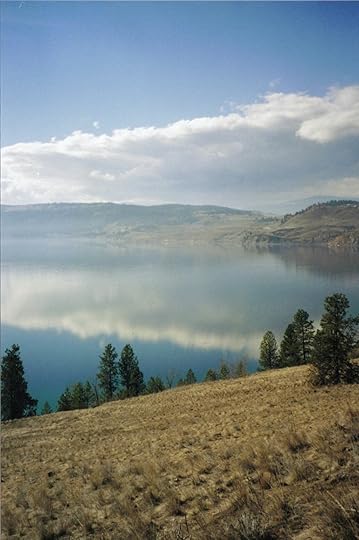 Kal Lake
Kal Lake Silver Star MountainWhat? Small Town & Rural Terrain
Silver Star MountainWhat? Small Town & Rural TerrainRural living and being a part of a small community has instant appeals. Urbanites dreaming of a daily life that is simple and stress-free, surrounded by fresh air and friendly faces, might see small towns as attractive. And residents of small towns may want to see their unique landscapes represented in stories rather than the same big cities over and over.
However, small towns are often depicted in popular culture as clean, wholesome, and prosperous, further feeding into the idea that to escape the city is to escape corruption, poverty, and decay. Reality is more complicated though, and when you write a rural setting, you have to choose how much truth to include.
Small towns, until very recently, sometimes had insurmountable economic challenges tied to regional resources, weather, and vulnerability owing to reliance on a few key employers. And you expect to see (and be seen by) people you know when you run errands or dine out. That level of interconnection can feel welcoming or suffocating. Or both.
 Silver Star FoothillsTemporary Travel
Silver Star FoothillsTemporary TravelSo, retro settings are not for everyone. Neither are small town lifestyles. But the magic of being inside a fictional world is that you can experience the charm of a place — like fresh cherries on tree branches and cycling along rural traffic-free roads — without making the commitment to live there.
Next time I talk about setting will be Part 2. That’s where it’ll get weird. I promise.

Worldbuilding for Retro Magic Realism: Part 1 — The Real World was originally published in The Fragile Receptacle on Medium, where people are continuing the conversation by highlighting and responding to this story.
October 2, 2020
Cover Reveal for ⚡The Electric Girl
It’s cover reveal day! And naturally, I’m very excited! I’m sharing not just the artwork, but the title that I’ve been keeping under wraps as well. Since I’m not much for secrets though, some of you have already guessed that I’ve been working on my 2017 NanoWriMo project, The Electric Girl.
This book has been a labor of love and having it wrap at the end of 2020 is bittersweet. Crafting this story has allowed me to explore some of my favorite 80s pop-culture and other childhood memories. So I’ve been talking about the power of nostalgia and the emotional value of visiting the past. There’s certainly a lot more I’ll be sharing in the coming months about world-building decisions and weaving surreal elements into a hometown backdrop.
For now, I’ll just tell you that The Electric Girl is a magic realism YA that blends sci-fi and fantasy elements. It’s got girl power, adventure, riveting battles, and some pieces of the past that are pure retro fun. Keep scrolling for the blurb.
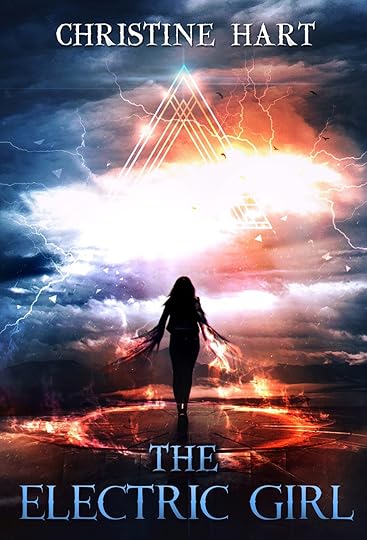
Polly Michaels spends her days trying to forget that her mom has cancer. Until a unicorn shows up after a freak electrical storm.
Sy’kai awakens on the ground to the smell of rotting fruit and wet earth. She doesn’t know where she is … or what she is … but she knows something is hunting her.
As Polly and her friends search for the creature in the orchard, the disoriented stranger scrambles to survive. When the girls find Sy’kai they’re swept into a struggle between two powerful beings bent on each other’s total destruction. After the girls learn that their whole planet is at stake, they risk everything to fight back.
Artwork from the extremely talented Consuelo Parra Digital Art.

Cover Reveal for ⚡The Electric Girl was originally published in The Fragile Receptacle on Medium, where people are continuing the conversation by highlighting and responding to this story.
September 10, 2020
Indulging in Nostalgia to Escape
 Images from Unsplash.com. Delorean by Jason Leung. Cassettes by Hello I’m Nik. Phone by Markus Spiske.
Images from Unsplash.com. Delorean by Jason Leung. Cassettes by Hello I’m Nik. Phone by Markus Spiske.My new book is set in 1988. I was nine for most of that year. Although the protagonist in this story is 14, I’m drawing on personal memories to recreate that time period. But I’m almost 42 now. And I was 39 when I started work on this manuscript. So my childhood wasn’t exactly yesterday. How could I inhabit the past, the world as it was in 1988?
Fortunately, indulging in nostalgia achieves this goal quite nicely. And it’s something I’ve been practicing for decades. It started when I hung onto childhood toys there was no reason for me to keep, hauling them around from apartment to apartment. I’ve been thrifting vintage clothing since my teen years, hanging them carefully to extend their lives instead of tumbling them in the dryer.
I still have a moderate-sized collection of VHS tapes (which I now use to bore my children) and I like watching old television shows that stream on Roku. I’ve also resurrected my collection of vintage stickers. And I handed over my vintage toys to my children, allowing them to re-enter society instead of laying frozen in shoeboxes.
 Lisa Frank, Sandylion, Hambly Studios
Lisa Frank, Sandylion, Hambly StudiosFrom to time, I put on an old sweatshirt, thinking about how long I’ve had it. I watch those VHS cartoons. I flip through that old album of metallic stickers. I hold one of those old toys now loved by a new generation.
Eventually I noticed that something special — almost therapeutic — was happening when I let the past trickle into my brain. Those little pieces of my life almost always release a rush of endorphins when I hold or even look at them. It’s as close as I’ll ever get to time travel. You can see where I’m going with this.
When times get tough, the need to retreat back to when life was good is shockingly powerful. Whether it was long days at mundane jobs, endless nights with tiny babies, or now, staring down the barrel of a global pandemic, sometimes leaving the present looks like a fantastic choice. And I’m not suggesting anyone should give into this on a wholesale scale. The past had amazing moments. For the occasional moment, you can set your current life on the shelf and soak in memories like an herbal bath.
You’ll need to come back eventually. Everyone does. But while you’re there, it’s downright magical.
It felt surreal to travel back to 1988 every time I worked on this book. Although the chance to visit an alternate version of the world I grew up in was reason enough for me to finish the story, I also hope anyone who reads it will experience (and enjoy!) the past to some degree too.
If you’re following along with my new book journey, stay tuned for a cover reveal and more on the surreal side of the world-building needed for this story.

Indulging in Nostalgia to Escape was originally published in The Fragile Receptacle on Medium, where people are continuing the conversation by highlighting and responding to this story.
December 2, 2017
NaNoWriMo 2017 Report & Reflections
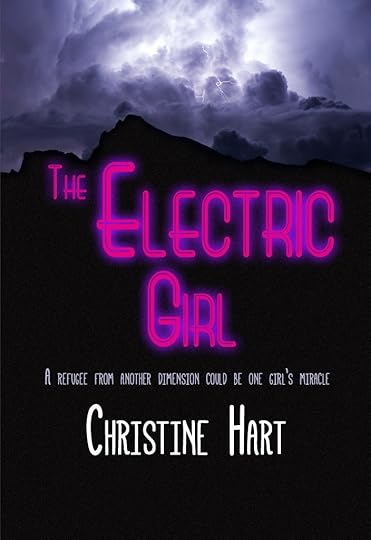 Quicko Working Cover for NaNoWrimo
Quicko Working Cover for NaNoWrimoThis year’s novel writing month is over and I’ve learned a lot. Some of the lessons were more like reminders, but I did glean some new insights.
As with last November, I didn’t ‘win’ NaNoWriMo — or more specifically I didn’t hit the goal of 50,000 words. That wasn’t a priority for me, because I was picking up a work in progress that was already ~18,000 words strong.
This November was an all-around bad month for me to try boosting my fiction goals.
My work for Stambol Studios was going to involve media relations (we had a huge win this fall; Go Stambol! )as well as regular blogging duties. I had planned to attend a destination wedding (which was amazing!) and this month was the culmination of ongoing efforts (proven effective now, woot!) to revitalize my Etsy shop, Sleepless Storyteller. I could give you more detail about my list of why-nots. But I started this post to share the wins I did take way from last month’s efforts, so here they are.
Accountability = More Writing, More OftenWhile the most noticeable benefit was the boost to my WIP’s word count, I feel the situation is more complicated. The self-imposed obligation to have an update for my novel’s NaNo page really did drive me back to my computer as often as possible. Being able to put up at least a couple hundred words into the count tracker compelled me to write when I would have gone to bed, read for myself, or even, gasp, watched television.
Social Networking is Good for MoraleIn addition to signing up on the NaNoWriMo website, I joined the Golden Ears Writers: NaNo Support Group on Facebook. The moderator provided a generous amount of support in the form of posts and sharing. I appreciated her efforts as I’m sure many of the other members did too.
A Little Progress, A Lot of PerspectiveIf I knew I couldn’t win, why did I even sign up at all? Writers who’ve been at it for even a few years will know the answer. The compulsion to create can be all-consuming, in spite of increasingly daunting odds. We all get into the fiction game knowing that most projects will fail on some level. Most manuscripts get rejected. Most books don’t earn out their advances. But before I get sucked down the rabbit-hole of reasons to quit, shared positive energy was an unexpected perk of being a NaNo participant.
The single most important takeaway for me is that I’m more confident than ever about my genuine love affair with writing fiction. Love of the craft is still enough for me, no matter how it stacks up against other writers, or against my own record one month to the next.
I am now in a much better position to finish (and revise) The Electric Girl by the end of the year, which was actually my goal. And I will definitely do a properly registered NaNo again next year as opposed to just writing during November. So hopefully my next fiction update will be a pre-New Year’s celebration!

NaNoWriMo 2017 Report & Reflections was originally published in The Fragile Receptacle on Medium, where people are continuing the conversation by highlighting and responding to this story.
November 2, 2017
NaNoWriMo 2017 with The Electric Girl
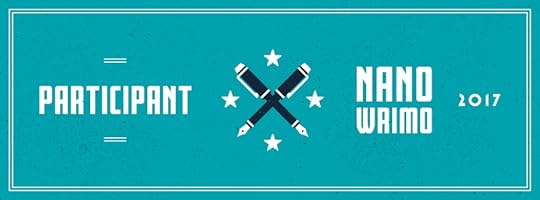
So I’ve formally signed up for NaNoWriMo this year. Last year, I just worked on fiction during the month of November, as I generally do most other months. The only thing that made last November different was that I felt guilty about my other commitments and wished I could work on more fiction.
I use the phrase ‘work on fiction’ instead of simply saying that I’m writing because the act of writing is also my day job. Most fiction writers I know work unrelated day jobs. And most copywriters and communications professionals I know don’t slog away at fiction in their off hours. Maybe I really need a new hobby. (No, wait, I already do that too, nevermind.)
But even so, for this year’s NaNoWriMo I signed up properly — I’m sleeplessstoryteller for anyone who wants to add me as a writing buddy. I didn’t just create an account; I even shared some teaser material for the book I’m working on, The Electric Girl. The quicko cover I posted is terrible, so check out my Pin Board instead.
As I’m writing this post (instead of doing any of a host of tasks that move forward my book, my day job, or my Etsy business) I’m already considering the act of tracking and social media-ing my fiction work to be a distraction.
Will NaNoWriMo participation be just another way to procrastinate at the computer? Or will I find some writing buddies and draw extra motivation from the site’s tracker tools?
I’ll be sure to post an update here, again, when this November draws to a close. In the meantime, wish me luck!

NaNoWriMo 2017 with The Electric Girl was originally published in The Fragile Receptacle on Medium, where people are continuing the conversation by highlighting and responding to this story.
September 25, 2017
The story behind the story: Writing Secrets from Myself
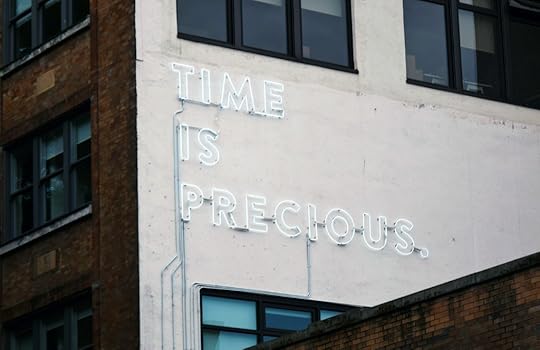 Photo by Harry Sandhu on Unsplash
Photo by Harry Sandhu on UnsplashEach of my novels starts with a ‘what if’ type of question. With Watching July, it was, “What if you accidentally started dating your stalker?” For Best Laid Plans, “What if your parents were the bad influence in your life?” And for In Irina’s Cards, “What if the men destroying our world were doing it on purpose?”
Secrets from Myself started with a question as well, minus the ‘if’ part. “What can we really do for the dead?” Over twenty years ago, I lost a friend, Harvinder Gakhal, to a horrible domestic violence incident in which her whole family was killed. It has eaten at me to varying degrees over the years. She was academically brilliant, genuinely thoughtful, and a good friend. Would she have a family by now? What career would she have settled on? Where would life have taken her? Why did it have to happen? The man who committed the crime took his own life. There is nothing left to do for my friend, except to remember her. Hence my ongoing curiosity about how we can best honour victims of tragedy.
During the summer of 2014, I spent most of my lunch hours walking around Gastown. I quickly picked up on the district’s history, not only because of its raw brick aesthetic, but because of the ghost stories lurking around places like Blood Alley. I had been toying with the idea of a story about a runaway connected to a ghost. I had spent several years working on The Variant Conspiracy, a sci-fi urban fantasy trilogy, and I thought it was time to go back to magic realism. I also wanted to challenge myself with a historical element.
When I encountered the story of the Komagata Maru Incident, I saw something of my lost friend between the lines. The effect was profound enough to enter the fictional story I’d been crafting. I had always wanted to write a story for Harv, as she’d actually done for me once upon a time. So I was inspired to craft a story that lived where she lived, inside two worlds, caught between what she wanted and what her loved ones wanted for her.
In Secrets from Myself, Akasha and Harv are not one and the same. Like Katelyn is not me. The girls in my story have an even more profound connection, one that explores the idea of how the human soul can rediscover the world while staying mired in trauma.
Writing Secrets, confirmed the idea that justice can be an empty present for the dead. We can only console the living. And we can’t fix the past. We can only apologize and remember.


The story behind the story: Writing Secrets from Myself was originally published in The Fragile Receptacle on Medium, where people are continuing the conversation by highlighting and responding to this story.
September 18, 2017
Top 10 Worldbuilding Questions
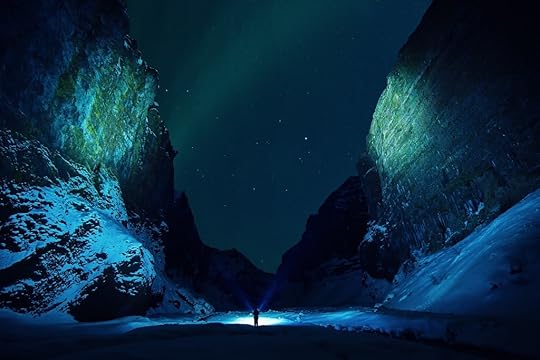 Photo by Jonatan Pie on Unsplash
Photo by Jonatan Pie on UnsplashThe call of worldbuilding has been strong this year. So naturally, one of the projects in my ‘Development’ folder is a middle grade fantasy series of five books.
The road to building a world is a long one. Or at least in my opinion, it should be long with many twists and turns. An entire planet with species and associated civilizations (culture, infrastructure, politics, history) doesn’t just materialize when you sit down to write.
As I continue sketching out this world (literally) and the main characters (also literally) I’m unravelling layers of what it means to build a world. The series I’m developing now marks a dramatic departure from my magic realism roots. It’s a plunge into the icy waters of fantasy, for the hard-to-engage middle grade reader. And like many writers before me, I know the devil is in the details.
So with this in mind, I’m sharing my top worldbuilding questions. These are my thoughts on what you should ask yourself before and during the creation phase. They seem basic, but you do need to spend some time mentally dwelling on these areas. Keep reading and you’ll see they’re often questions within questions.
This can be fun, but it’s also daunting. If you want your world to be relatable and interesting, you need to make sure your continents, mountains, beaches, lakes, cities, and forests all exist and behave in believable ways. If you depart from what we know of planetary geography, you’ll need to back it up with theoretical physics.
2.) Who lives where on the planet and why?Consider the climate of your world and which species would live in which areas. Do you have one dominant species adapted to different regions, with a myriad of predator and prey animals in a separate food chain? Or do multiple advanced species inhabit their areas of origin and/or comfort? For the latter, what kind of ecosystems do you develop?
3.) How old is your planet?The age of your planet may not be as important to the story as the age of your civilization(s), but consider both questions as you build. Are any areas of the planet geologically volatile? How long have the inhabitants had to evolve and adapt?
4.) Does your fantasy planet have a connection to Earth?Bringing humans and Earth into the context of a fantasy story can be a great way to orient your reader. Some writers may feel it’s needlessly gratifying to insert ‘us’ into a story where ‘we’ don’t belong. In my experience as a reader, I like to see how humanity (and by extension, me) fits into the fictional world I’m visiting. You can make your fantastic world matter to the reader in a more concrete way if you thread it somehow into our own past, present, or future.
5.) Do humans live on your planet?Related to the question above, but a distinctly different point. From Earth’s post-human future to distant planets in a galaxy far, far away, it may feel more authentic to create a world that has no contact with humanity, if for no reason other than to honour the fact that we don’t yet know of life outside our own world.
6.) How many stories will take place in/on your world?Once you’ve built a world, you may decide it’s worth more than one story. You might want multiple plots simply because of the current digital market business case for developing a series rather than a stand alone title. Personally, I like to tell a story as it evolves naturally. Do you need three books to get your characters where they need to go? Or will it be more complex, stretching into five, ten, or more books?
7.) How much history do you need? How much culture?My favourite fantasy worlds are places with their own richly detailed history, art, music, and politics. With the good also comes the bad. How many wars are in your civilization’s past? How does recent and distant history impact the characters in your story and the world they inhabit?
8.) Are you incorporating surreal geographic phenomena?While this is a fun and fascinating realm to explore, you’ll need to do some research to create something your readers will understand well enough to visualize. Start with some real world phenomena and you’ll be surprised how bizarre you can get.
9.) Where does your plot take your characters?Keep in mind the specific locations or settings where your story takes place and develop those areas the most. If your planet has an uninhabited continent not relevant to your plot, don’t worry to much about the nuances of the topography.
10.) Are symbolism and/or allegory at work in your story?Personally, I don’t have a problem with the planet itself or the people on it representing something other than their literal realities. However, I believe it takes advanced skill to pull off symbolism in a meaningful and rewarding way. More skill than I myself possess. So if you’re going to tackle creating a country or a civilization that represents a larger human truth, tread carefully or risk missing the mark.
Originally published at www.christine-hart.ca on October 17, 2016.

Top 10 Worldbuilding Questions was originally published in The Fragile Receptacle on Medium, where people are continuing the conversation by highlighting and responding to this story.
August 21, 2017
A Creative Tour of Vancouver, BC
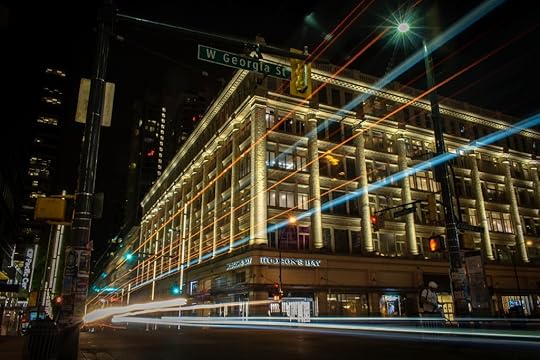 Source: Unsplash / Aditya Chinchure
Source: Unsplash / Aditya ChinchureAny creative in the 604 will tell you we have a love/hate relationship with the region. It’s an arts, fashion, and tech hub that draws us all in like moths to a (temperate-for-Canada) flame. But we’re quickly zapped by both real estate and labour markets.
Hence the attrition to our ranks as we age and drift out of the city into the fringe municipalities. I knew when I left the urban Metrotown neighbourhood in Burnaby for the cedar-rich suburb of Brookswood in Langley, I was making a trade that would be bitter sweet. Affordable and peaceful for me. Family-friendly for my kids. And totally cut off from the concrete jungle I loved. I try to sneak back as often as possible, even if I can only do it online most of the time. Greater Vancouver has influenced my fiction, my artwork, and in all likelihood, my world view. I draw inspiration from her eclectic boutiques and dedicated indie residents.
So, before I dive into the awesome districts, shops, and watering holes I miss so dearly, I should qualify this list by conceding the SFF slant to about a third of these picks. If you’re a sci-fi or spec fic nut, they’re a perfect fit. If not, there are still some great artsy haunts to discover. They’re not in perfect walking order, but then again, neither is Vancouver. I did manage to leave the outlying spots at the end though. Anything singled out for its own section is just that impressive to this artsy little writer.
Downtown CoreSometimes there’s nothing more effective for getting the creative juices flowing than a crepe and a wander around the heart of Vancouver. As a young adult, I used to favour the retail stretch of Robson Street and the punkish (albiet still trendy) strip along Granville. Now, I try to keep my eyes peeled for gems like The Fall Gallery and USED House of Vintage.
Central LibraryIt’s a shame this epic landmark doesn’t pierce Vancouver’s iconic skyline like the Lion’s Gate Bridge, Science World, or the Harbour Centre. I get a curious sense of satisfaction every time I find this majestic brick and glass spiral as a set for film or television. Maybe even more satisfying than attending a book fair here as an author or finding my own first book shelved here. Maybe. Depends on the day.
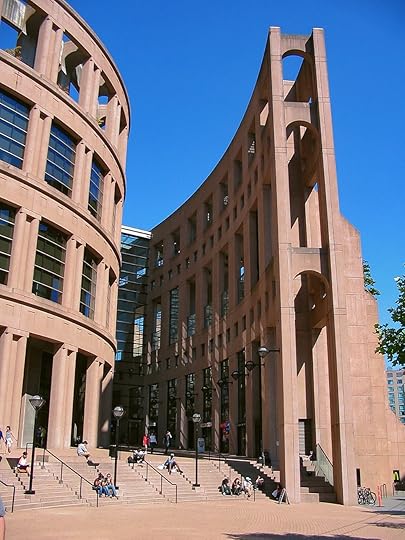 Source: Wikipedia / Alex RamonSteamworks
Source: Wikipedia / Alex RamonSteamworksI’m one of the many writers that concedes there is no way to get decent (ok, really any) work done while drinking. That doesn’t mean a nice fruity European beer has no purpose in life. And at Steamworks in Gastown, when you’ve got a harbour view to go with said ale, it’s hard not to be inspired.
Salmagundi WestIf you’re like me and you like your weird wares with a side of the bizarre, do not skip a visit to Gastown, specifically Salmagundi West. Browse both levels of this amazing amber-scented treasure trove. Part art gallery, part antique shop, part crazy curio den; it’s 100% fantastic.
ChinatownIt took me a few years to stop comparing Vancouver’s Chinatown to Victoria’s. After all, spending two 5-year stretches in BC’s capital (once for Uni and once for a job) had me pretty convinced I knew which was best. But once I let go of the measuring tape, I spent many lunch hours wandering the beautiful blocks of East Pender between Abbott and Main. I discovered Erin Templeton, the Dr. Sun Yat-Sen Classical Chinese Garden, and of course, the Millennium Gate.
MacLeod’s BooksWalk into MacLeod’s Books if you have more than a few minutes to spare. I’ve made the mistake of browsing during a lunch break and it’s never enough time. Come to think of it, I’m not sure how much time is enough time to uncover every title you’d want to take home from MacLeod’s. I recommend going it alone. The fewer bodies in the shop while you browse, the better.
 Source: Pixabay / EliFrancisWest End
Source: Pixabay / EliFrancisWest EndI’ve never been to New York, but for some reason, I picture neighbourhoods like Vancouver’s West End all huddled around Central Park. I could be way off. I’ll have to visit New York one day to know for sure. Until then, I can walk around the residential streets of the West End for a small clue as to what it’s like to actually live and work among high-rises.
Granville IslandNo artist can visit Vancouver and miss out on a trip to Granville Island. It’s home to open studios, high-end galleries, and supply shops. Not to mention the prestigious Emily Carr University of Art + Design. If I went to art school, that’s where I’d want to go. It would probably crush what’s left of my self-confidence after years of writing, but I’m sure it could turn a longtime amateur into a skilled painter in a few years. It’s also worth mentioning that from the gelato to the glass beads, you’ll pay a premium for whatever you buy. But if you’re an art lover, it’s worth at least a look.
KitsilanoI won’t sugar-coat this one, the stretches of West 4th and West Broadway that make up Kitsilano are hipster central. But I like that kind of thing, so I’m going to include this district on my list. Close to the ocean and UBC, it’s a great district for creatives to shop, dine, and generally hanging out. Two of my personal favourite stops are Miz Mooz on W 4th and Immersion Clothing on W Broadway. If you don’t feel ready to launch a best-seller after that … well, you’re probably being realistic, but it’s still a fun afternoon.
I Found GalleryThe artist/maker/crafter in me loves the vintage brass components and stampings at the I Found Gallery. The vintage clothing nut misses their original location (and now partner store under the same roof) True Value Vintage. Twice the awesome out of one stop.
The Storm Crow TavernCan any creative geeky type skip a pub that serves Romulan Ale? I think not! And I’ve actually had it, along with their Golden Apple of Discord cocktail (during a GoT screening!) and a few others. Next time — the Pan Galactic Gargle Blaster!
https://medium.com/media/d6797b2341809b60f18241b2525e9b00/href
A Creative Tour of Vancouver, BC was originally published in The Fragile Receptacle on Medium, where people are continuing the conversation by highlighting and responding to this story.
July 18, 2017
5 Reasons to Outline Your Next Book
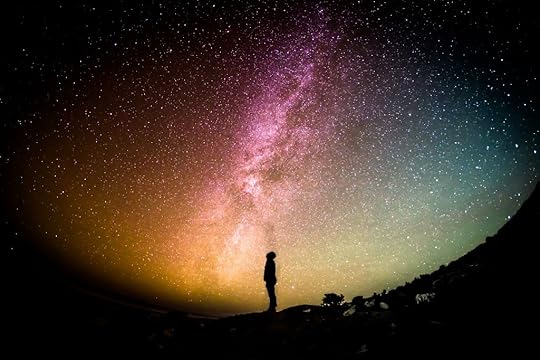 Source: stocksnap.io / Greg Rakozy
Source: stocksnap.io / Greg Rakozy“If you do enough planning before you start to write, there’s no way you can have writer’s block. I do a complete chapter by chapter outline.” — R. L. Stine1. Prevent (or Avoid) Writer’s Block
I’ve come to rely on outlines. Their primary function for me is to keep a story moving, but I also use them to revitalize my excitement for a book. I outline pretty much the way Stine suggests above, staring with a synopsis and moving on to chapter summaries that bluntly hit each key action point.
I make my outline an early task in the development of any novel. So I’m still super pumped about the overall concept. And if I stray into dreaded ‘saggy middle’ territory, I have the short, snappy (often enthusiastic) chapter summaries to fall back on. It’s a little bit of text to keep me focused and get me back on track.
2. Make Your Writing Time ProductiveVery few novelists I know are writing full-time with no other distractions or commitments. Whether you’re at home with kids, self-employed, working part-time, or commuting to a demanding job, your writing sessions will vary in both duration and frequency. If you only get a few hours per week to write, you can be sure of getting something done if you’ve got a guide to follow.
This is especially true for writers who are forced to take long breaks while working on the same novel. A good outline works like a “previously on” television recap so you can quickly get back up to speed and find your narrative voice again. If you haven’t worked on your book in a month, you don’t want to have to re-read the entire draft just to be able to resume writing.
Are you starting a series? Is the plan to write a single novella? Flushing out the project from start to finish will help you identify how much material you really do (or don’t) have. If your novel should actually be a novella, a solid outline will bring that to light. Sometimes a trilogy really needs to be a pentalogy.
I, for one, don’t want to pour hours upon hours of work into a labour of love (read: project for which I’ll earn little money) when I don’t have a clear vision of where it’s going. I’d be disappointed in myself if I thought I had a novella on my hands only to realize too late that it should be a short story. Unfocused work leads to unpublished writing. Many writers are cool with that. But to me, unpublished work equals wasted time and effort.
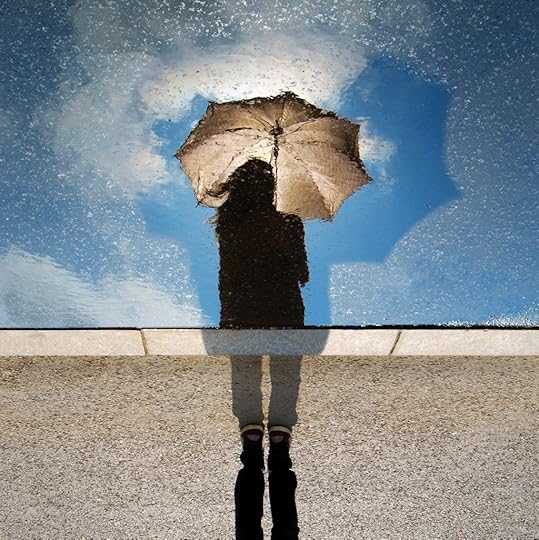 Source: stocksnap.io / David Marcu4. Identify Plot Holes and Useless Characters
Source: stocksnap.io / David Marcu4. Identify Plot Holes and Useless CharactersWhittling down chapters to two- or three-sentence summaries will force you to keep your eye on what’s important. Do you have a character that only matters in two of thirty chapters? Why is that person in the story? Is there an event that happens in chapter four that remains unresolved? Where was that plot point going? Did you leave a loose end or were you needlessly slowing the action?
5. Develop Marketing IdeasWhile I’m writing, my marketing plan is concurrently coming together. Not every writer uses the same tools or workflow, but if you find yourself sidetracked by some interesting marketing ideas, you can make useful comments about your story — particularly if you’re polishing a query letter or blurb so that it’s ready to go the moment you’re satisfied with your manuscript.
I hope I’ve given some fly-by-the-seat-of-their-pants writers a couple points to think about. There’s certainly no guarantee an outline will make your writing or story idea better. And many wonderful books come into the world with no detailed planning. Whatever you can do to set yourself up for a better writing experience is ultimately the way to go.

5 Reasons to Outline Your Next Book was originally published in The Fragile Receptacle on Medium, where people are continuing the conversation by highlighting and responding to this story.



